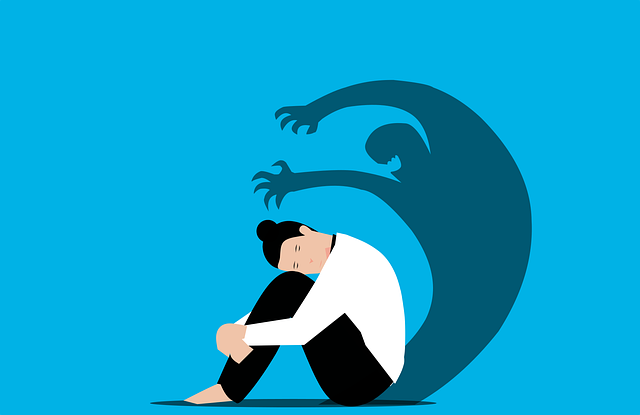Panic disorder therapy combines cognitive behavioral therapy (CBT), mindfulness, relaxation techniques, and exposure therapy to address negative thought patterns and fears associated with panic attacks. This comprehensive approach, tailored to individual needs, also incorporates lifestyle adjustments like exercise, sleep hygiene, and balanced diets. Social support through groups or personal connections enhances recovery by providing a safe space to share experiences and build resilience against anxiety symptoms, complementing open communication with therapists for effective progress in treating panic disorder therapy.
“Discover effective solutions for managing comprehensive anxiety disorders and panic disorder therapy through this insightful guide. Understanding panic disorder involves exploring therapeutic techniques that have proven successful in alleviating symptoms. We delve into cognitive behavioral therapy (CBT), a multifaceted approach revolutionizing anxiety management. Additionally, learn about supportive measures and lifestyle changes essential for optimal recovery. For those seeking to conquer panic attacks and chronic anxiety, this article offers valuable insights into available therapy programs.”
- Understanding Panic Disorder Therapy: Unraveling the Techniques
- Comprehensive Anxiety Disorders Treatment: A Multifaceted Approach
- The Role of Cognitive Behavioral Therapy (CBT) in Managing Anxiety
- Supportive Measures and Lifestyle Changes for Optimal Recovery
Understanding Panic Disorder Therapy: Unraveling the Techniques

Panic disorder therapy is a specialized form of treatment designed to help individuals manage and overcome panic attacks and the underlying fear that drives them. It involves a range of evidence-based techniques aimed at unraveling the complex mechanisms behind panic disorders. One common approach is cognitive behavioral therapy (CBT), which focuses on identifying and challenging negative thought patterns associated with panic attacks, replacing them with more rational and balanced perspectives.
Through CBT for panic disorder therapy, individuals learn coping strategies to manage their symptoms effectively. This includes relaxation techniques like deep breathing exercises and mindfulness meditation, which help calm the body’s physical responses to fear and anxiety. Additionally, exposure therapy gradually exposes patients to situations that trigger panic attacks in a safe environment, allowing them to confront and overcome their fears with support from a therapist. By combining these techniques, panic disorder therapy offers a comprehensive approach tailored to address both the psychological and physiological aspects of the condition, ultimately improving quality of life for those struggling with panic attacks and associated anxiety disorders like GAD or social anxiety treatment.
Comprehensive Anxiety Disorders Treatment: A Multifaceted Approach

Comprehensive Anxiety Disorders Treatment involves a multifaceted approach tailored to address the unique needs of each individual. This often includes a combination of evidence-based therapeutic techniques such as cognitive-behavioural therapy (CBT), mindfulness practices, and relaxation strategies. CBT specifically targets distorted thought patterns contributing to anxiety, while mindfulness helps individuals stay grounded in the present moment, reducing panic attacks and avoidance behaviours. Relaxation techniques like deep breathing exercises and progressive muscle relaxation foster a sense of calm, counteracting the physiological symptoms associated with anxiety disorders.
In addition to therapy, lifestyle adjustments play a crucial role in managing comprehensive anxiety disorders. This includes regular exercise, adequate sleep hygiene, and a balanced diet. Social support from family and friends can also significantly enhance recovery. For panic disorder therapy, group sessions can be particularly beneficial, offering a safe space for individuals to share experiences, learn coping mechanisms, and build resilience against overwhelming anxiety symptoms.
The Role of Cognitive Behavioral Therapy (CBT) in Managing Anxiety

Cognitive Behavioral Therapy (CBT) is a highly effective approach for managing both panic disorder and social anxiety treatment, as well as Generalized Anxiety Disorder (GAD). This form of therapy focuses on identifying and changing negative thought patterns that contribute to excessive worry, fear, and anxiety. CBT helps individuals recognize unhelpful cognitive distortions and replaces them with more realistic and balanced thinking, which in turn reduces symptoms of panic disorder therapy.
Through structured sessions, CBT empowers patients to challenge their anxious thoughts and behaviors. It encourages active participation, teaching practical coping strategies to manage anxiety-provoking situations. By learning to reframe negative perspectives, individuals can gradually confront their fears, leading to significant improvements in anxiety therapy outcomes.
Supportive Measures and Lifestyle Changes for Optimal Recovery

For optimal recovery from panic disorder therapy, supportive measures and lifestyle changes play a crucial role. Encouraging open communication is essential; individuals should feel comfortable discussing their experiences, fears, and progress with their therapist. Building a strong support network, whether through therapy groups or personal connections, can significantly enhance well-being. This social support acts as a buffer against anxiety and offers valuable perspective during challenging times.
Additionally, adopting healthy lifestyle habits is instrumental in managing panic disorder. Regular physical activity, for instance, has been proven to reduce anxiety symptoms and improve overall mood. Mindfulness practices, such as meditation or deep breathing exercises, can help individuals cultivate present-moment awareness and regulate their responses to panic attacks. A balanced diet and sufficient sleep also contribute to mental health, giving the mind and body the nourishment they need to navigate the complexities of anxiety therapy and social anxiety treatment.
Panic disorder therapy, as explored through various techniques like cognitive behavioral therapy (CBT), offers a promising path to managing symptoms. Comprehensive anxiety disorders treatment, adopting a multifaceted approach that includes CBT alongside supportive measures and lifestyle changes, can lead to significant improvements in quality of life. By understanding the unique challenges of panic disorder and implementing effective strategies, individuals can navigate their recovery journey with newfound resilience and control over their anxiety.

